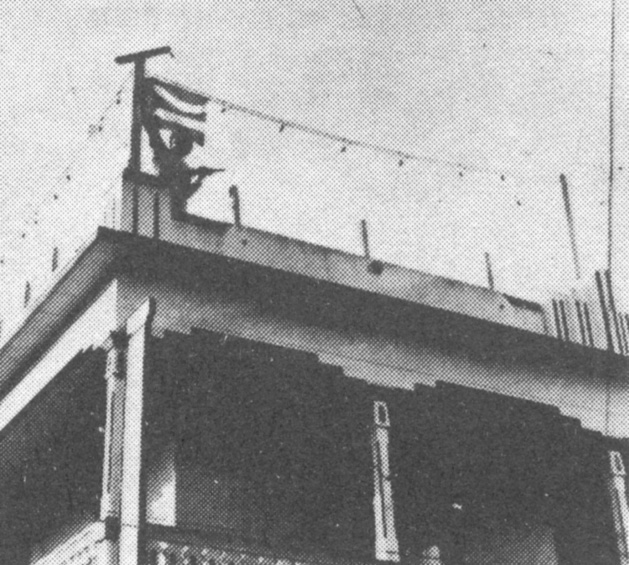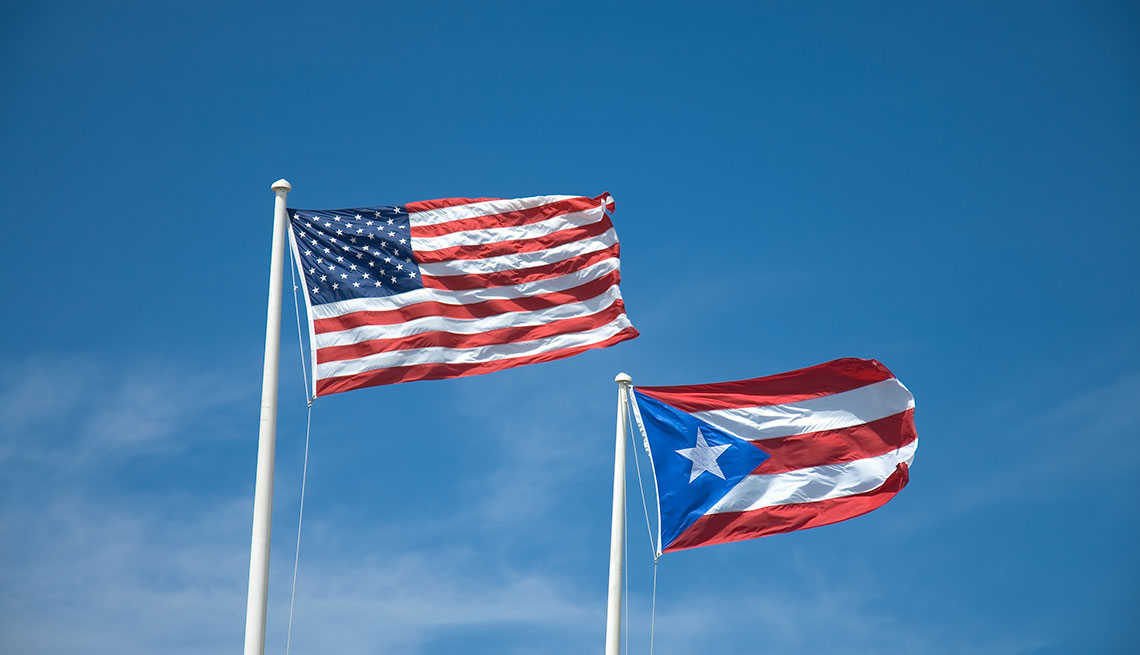Erasure. It's not just the name of a "synthpop duo" from the 1980's with "new wave" style music (Wikipedia). Although that is exactly what comes up when you type the word into Google, it is also a word to describe how many indigenous nations in the American continents have disappeared in our written history. I am going to focus on the group of people referred throughout history as the Taíno.
I will start off by defining Taíno. When I started researching for this paper, I understood the term to refer to indigenous people living in Puerto Rico (known as Boriquén by the indigenous people, spelling may vary) at the time Columbus landed in the Americas (El Boricua). I have since learned that Taíno is a very broad name and was used to refer to not only those in Puerto Rico but also throughout the Antilles islands, including eastern Cuba, the Bahamas, then Hispaniola (Haiti and the Dominican Republic), Jamaica, and the Virgin Islands. Not only does this name refer to a people spread out over a large geographical area, the origins of the name itself are even more interesting.
The word Taíno doesn’t appear until Columbus’ second voyage when he landed in Guadeloupe and found a group of captive women and children that, “Once they met the Spaniards, they used the word tayno or tainon to mean that they were ‘good.’ It is clear that the term was used more as a qualifying adjective to refer to a concept of goodness… rather than as an ethnic label or ethnonym as it has been used by many scholars,” (Curet, 470). Therefore, the idea of the Taíno was created by these Spaniards to refer to those living in the Greater Antilles, especially those that were “noble, peaceful, and good.” It was the equivalent of calling them the “noble savages” as opposed to the war-like Caribes people that were considered the “true savages,” (Curet, 470).
Before the arrival of Christopher Columbus in the New World, around 900 BCE, the first people began migrating from Venezuela to the surrounding Caribbean islands (Figueroa). They established their communities and cultivated the land. The stories they shared were not written but passed by word of mouth. The written histories of the Taíno, written by Spanish Friars, begin the same time they lost their independence.
When Columbus came to the New World and met those living in the Bahamas, among whom the label Taíno was later applied, he wrote that, “They were very well built, with very handsome bodies and very good faces… They do not carry arms or know them… They should be good servants,” (Rojas).
 |
| Illustration of Taíno |
50 years. Their culture was interrupted by disease, marriage with Spanish and Africans, and so forth, but the main reason the Indians were exterminated as a group was sickness,” (Rojas). The idea of pure Taínos as an indigenous group likely disappeared completely in the sixteenth century, although evidence of them in the DNA of modern-day Puerto Ricans continues to thrive (Figueroa). In a study conducted by Juan Carlos Martínez Cruzado on mitochondrial DNA, published in 2002, he found that, “Of the 800 participants [in Puerto Rico], 489 (61.1%) had mtDNA of indigenous origin, 211 (26.4%) had mtDNA of African origin south of the Sahara, and exactly 100 (12.5%) had mtDNA of Caucasian origin,” (Martínez, 3). These statistics show that while the practices and customs of the Taínos may have disappeared in many forms, their descendants live on in Puerto Rico today.
In 1492, Columbus sailed the ocean blue (Marzollo). He came to the islands in the Caribbean known as the Greater and Lesser Antilles. From then on, he claimed those islands for the Crown of Castile. In November of 1897, Spain allowed control over political administration to pass to the citizens of Puerto Rico but they had a governor appointed by Spain (Rivera). That following February, they put this new self-government into full effect. By autumn of 1898, Spain ceded control of Puerto Rico to the United States after the Spanish-American War (History.com). Puerto Rico was then recolonized by the United States.
 |
| PR Flag Taken Down |
The Federal Emergency Management Agency otherwise known as FEMA is the taskforce in charge of responding to emergencies in the United States and their associated territories (FEMA). After Hurricane Harvey which hit Texas on August 25, 2017, and Hurricane Irma that hit Florida on September 10th that same year, emergency response supplies were in high demand but low supply (CNN). Some of the supplies normally stored in Puerto Rico for disaster response had even been sent to the Virgin Islands after Hurricane Irma (Young). After a month, FEMA was still trying to provide for the most basic needs–food and more importantly, potable water. When asked in the same PBS FRONTLINE film, the mayor of Luquillo, Jesús Márquez Rodríguez, said that if they had only seven generators, they would be able to provide clean drinking water for the people of Luquillo. But generators were another resource in short supply. After that first month, there was still a third of the island without clean, running water (Young).
 |
| The house in Kentucky when we arrived |
Laura Sullivan later comments on how the houses of many Puerto Ricans were simply shells of what they used to be–often only walls and floors remaining. Alice Thomas with Refugees International talked about the slow response in Puerto Rico especially compared to support given in other countries after similar natural disasters. Two months after the storm and many people still didn’t even have a roof over their heads. Those that did, had only temporary ones that leaked with the tropical rain storms. Thomas said, “The longer people and their homes are exposed to the elements, the more at risk they are, the more at risk their health is, and the more their home is lost,” (Young).
Many continue to live in their homes although in shambles. Jossie Lozada was interviewed in part of the film by PBS’ FRONTLINE and they discuss the aid FEMA has given to those in need in Puerto Rico. Jossie was able to get $33,300 from FEMA to rebuild her home, however 40% of those that applied for federal help were denied (Garcia). According to the ABA, “Under Puerto Rican law, one can be the legal owner of a property without having a formal title, presenting deeds, and so on. However, FEMA asked for such documentation to obtain assistance, leaving thousands unable to apply or receive help. The issue proves more complicated than most may think. In many ways, FEMA’s policies look to avoid unlawful claims by those who do not own property. On the other hand, they punish hard-working citizens who rightfully own their homes, but lack the documents to prove it,” (Garcia). One of Jossie’s friends had received only $6,000 from FEMA and was living in his car (Young).
According to FEMA’s documents about the incident and lack of supplies, they had only 12,000 tarps available with half a million homes in need of temporary roofing (Young). Operation Blue Roof is a program in place by the Army Corps of Engineers that collaborates with FEMA in disaster relief (HQ USACE). When comparing the relief efforts in Florida and Puerto Rico, the statistics are compelling. In 30 days after Hurricane Irma, 4,536 blue roofs had been installed. In that same amount of time in Puerto Rico after Hurricane Maria, only 439 blue roofs had been put in place. That is 9.7% the amount of tarps placed in Florida during the same amount of time (Young).
As I listen to the accounts given in “Blackout in Puerto Rico,” about the loss of power for months on end, I look around myself and imagine what that would be like. In the middle of December, with temperatures already dropping below freezing, I look at the small space heater next to me and the portable DVD player I was using, the Christmas tree behind me illuminating the room. I think about going to bed at night in a heated room. Then I think about what it would be like to lose all of that, not just for a day as has happened here in years before, but for months with no end in sight. As I consider all of this, I feel greatly upset that so many people went through circumstances like these. It may not have been December and below freezing when the hurricane hit Puerto Rico, but it was still hurricane season for a few more months after Maria devastated the island. It took 11 months for power to be restored to everyone in Puerto Rico, although the connection is not always reliable and some experience frequent outages still (Campbell).
Puerto Rico is viewed as property to the United States. Sergio Marxuach talks about how our wallets are as much a part of us as Puerto Rico is part of the U.S. Our wallets are simply an object that we have ownership of (Young). Citizens of Puerto Rico are required to register for the Selective Service, otherwise known as the draft for military service in case of times of crisis, but they cannot vote for the president of the United States, although they are considered citizens of the U.S. and they do not have any congressional representation (Selective Service System, Murriel). There are many people in Puerto Rico lobbying Congress that believe that statehood would solve a lot of issues they face now and would rectify inconsistencies in U.S. policies, while others think independence could be the answer.
Some argue on behalf of Puerto Rico saying, “Why would I allow somebody who abused me for 123 years, to then consume me?” and, “If you depend on someone all of your life, you’re not going to grow. In order for you to grow you have to be free and not depend on someone,” (CBS News). Others, such as Pedro Pierluisi, the current governor of the territory, make their own points by saying, “How come we are citizens of the most democratic nation in the world, yet we do not vote for the president of that nation? How come we have no voting representation in Congress as American citizens? It’s like geographic discrimination. And it makes no sense. We’re not immigrants. See, what happens in Puerto Rico when our people do not have an adequate quality of life, is that they hop on a plane and move,” (CBS News). Pierluisi is encouraging support of what is known as the Statehood Admission Act which could make Puerto Rico a state (Congress.gov, “H.R.1522”).
In Congress, Nydia Velazquez and Alexandria Ocasio-Cortez proposed a new bill, H.R.2070 which would allow for Puerto Ricans to vote on the issue themselves and could then be ratified by Congress (Congress.gov, “H.R.2070”). This bill would provide funding for delegations to inform the citizens of Puerto Rico of their options regarding statehood, remaining as-is, or independent from the United States. This way, Puerto Ricans can truly understand what it is that they are voting for.
Though not many people can name the indigenous nations that inhabited the lands Columbus “discovered,” they are still a part of our world’s history and their stories deserve to be told. Though the land passed through multiple hands, its citizens are proud of their heritage. It is increasingly more difficult for the inhabitants to subsist in Puerto Rico as natural disasters and economic troubles continue to plague their land.
In conclusion, I believe that it is important for those who live in Puerto Rico or who have a heritage there, to be able to vote to determine the future of their land. Perhaps some day soon we will see Puerto Rico a true and fully recognized country of its own or the 51st United State.
Bibliography: https://docs.google.com/document/d/16aHvD-dQtkEtWzTQGgp21PuHeJMWf0RyY4TnG_ZHDAI/edit?usp=sharing

